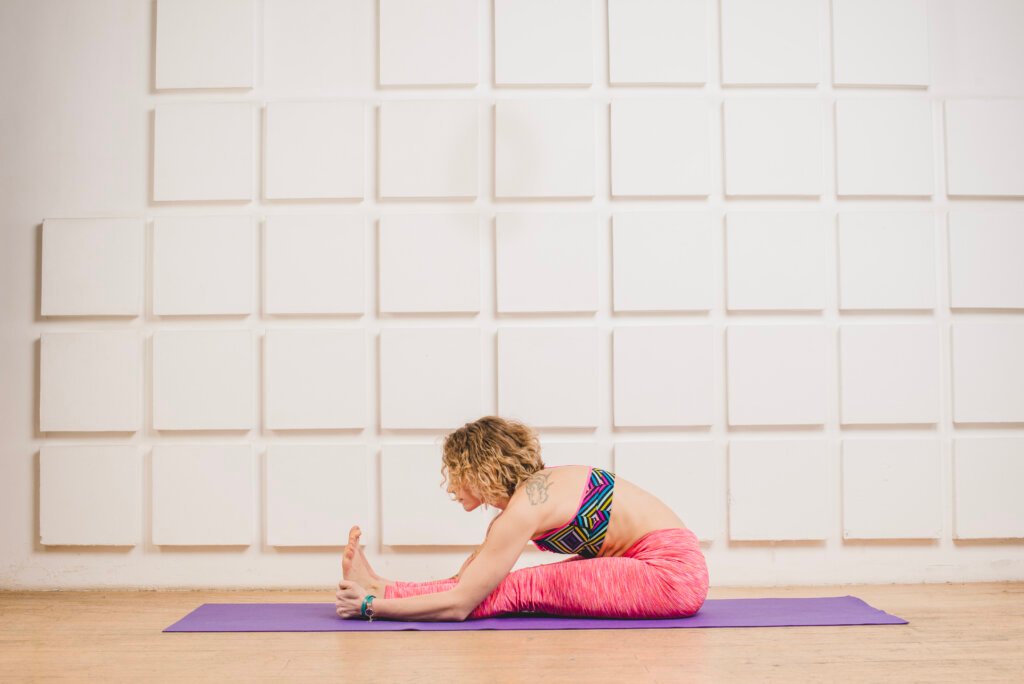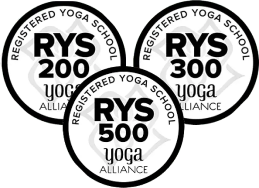Originating in India and later spreading throughout the world, yoga is a popular form of physical and mental exercise. A variety of poses and asanas help in controlling the symptoms of various illnesses. For example, some yoga poses can help reduce knee pain.
Knee pain can be reduced and muscles may become stronger with the right posture and yoga exercises. Pose variations that may increase pressure at the site of injury or pose a risk to specific individuals must always be avoided. In this article, we are going to discuss the best yoga poses for knee pain relief. So, without any wait, let’s start.
Table of Contents
ToggleYoga’s Beneficial Effects on Knee Pain
Yoga is a great option for immediate pain relief while dealing with knee pain. After practicing yoga for two weeks, patients with osteoarthritis reported less pain and increased mobility, according to several research studies. The muscles that surround the joint are mainly the reason for knee pain. Certain yoga poses for knee pain work on specific muscles and help in the healing process.
We Also Provide These Course
- 300 Hour Yoga Teacher Training in Bali
- 200 Hour Yoga Teacher Training In Bali
- 100 Hour Yoga Teacher Training in Bali
Best Yoga Poses for Knee Pain Relief
Setu Bandha Sarvangasana (Bridge Pose)
One of the most flexible poses is the Bridge Pose (Setu Bandha Sarvangasana). It can be done as a resting pose. It gives you many of options to choose the backend version that suits your needs. Doing yoga can be more about breathing and finding comfort than it is about struggling or exhausting yourself.

For the successful practice of this position, follow these guidelines:
- Lie on your back with your hands by your sides to start.
- Put pressure on your hands and shoulders as you inhale to raise your hips and knees.
- As you hold this pose, you may feel pressure in your shoulders and knees.
- Lower your back to the floor and rest your hands on the side as you release the breath.
Trikonasana (Triangle Pose)
Tri means “three,” kona means “angle” or “corner,” and asana means “posture” in Sanskrit. Thus, Triangle Pose, or Trikonasana, means “three corners.” This is a basic, beginner-level standing yoga pose that is included in practically all kinds of yoga. Triangle practice, also known as Trikonasana, is a more modern yoga practice that originated with Iyengar Yoga. It’s an excellent method to stretch the muscles surrounding the spine and open up the hips.

When performing this position, follow these guidelines:
- Place your feet wide apart and point your toes in opposite directions to stand straight.
- Extend your arms parallel to the ground and outward.
- With your right hand on the ground, flex your body to the right. The left hand should be pointing up at above while you perform this.
- Maintain this position for a minimum of ten seconds.
- For the opposite leg, proceed in the same manner.
Utakatasana (chair pose)
Lowering knee pressure, utakatasana (chair pose) transfers weight to the hip sockets. It also helps strengthen your quadriceps and hamstrings.

When practicing this position, follow these guidelines:
- Position your feet apart and your hands on the side in a straight position.
- To lower your hips, slowly bend your knees.
- Raise your hands and maintain a straight posture.
- After at least five seconds, come back to your starting position
Balasana (child’s position)
Your back and the muscles around your hips can be stretched by performing the child’s position. Sit on your knees while in this position. With your forehead resting on the ground, lean forward while maintaining your buttocks on your heels. With your hands facing up, position your arms so they are adjacent to your legs. Breathe in slowly and deeply for a minimum of eight breaths.

For the practice of this position, follow to these guidelines:
- With your legs apart and your toes touching, take a seat on your feet.
- Bring your forehead down to the floor by bending forward. Stretch both of your arms in the same way till they touch the ground.
- While lying in this position, concentrate on breathing slowly.
Shanti Virabhadrasana (peaceful warrior two pose)
Usually performed in vinyasa classes as a transition posture between warrior two and downward facing dog, or chaturanga, peaceful warrior pose, or shanti virabhadrasana in Sanskrit. With the back arm resting on the back leg, the front arm gently bends backward in the warrior’s two poses.

When performing this position, follow these guidelines:
- With your feet hip-distance apart and your hands extended to the ground, maintain a standing position.
- Stretch your left leg and bend your right knee forward slowly.
- Maintain this position for a minimum of ten seconds.
- Apply the same technique to the left.
Ashwa Sanchalanasana (High Lunge)
The High Lunge is a popular, basic position that requires both strength and balance. Power for contracting the legs, glutes, and feet is required, as is flexibility to stretch the front hamstring and release the back hip flexor. To gain even more stability in this posture, push through the front big toe.

For the successful practice of this position, follow these guidelines:
- Return to a deep lunge by moving your left foot (stretch).
- Bend your right knee forward while you stretch (approximately 90 degrees).
- Stretch your arms upward and focus your eyes forward.
- Hold this position for a minimum of ten seconds
Anjaneyasana (Low Lunge)
In Sanskrit, Low Lunge is called Anjaneyasana. It expands the chest and stretches the thighs and groins. In addition to increasing energy and helping in post-workout recovery, it actively works to improve body posture.

When performing this position, follow these guidelines:
- Lower the knee to the floor by bringing your left leg back.
- Bend your right knee forward while you work (approximately 90 degrees).
- Stretch your arms upward and focus your eyes forward.
- After holding this position for ten or more seconds, move to your left knee.
Conclusion
Maintaining flexibility and general well-being requires finding best ways to help relieve knee pain. Easy stretches and moderate yoga poses can help a lot with pain management and flexibility improvement. These yoga poses improve blood flow, build stronger knee muscles, and encourage better alignment—all of which help reduce knee pain. The function and health of the knee can be greatly improved with regular practice of these yoga postures. To be sure these techniques are right for your particular illness, always pay attention to your body’s signals and get advice from a medical specialist.
Related Blogs
Top 10 300-Hour Yoga Teacher Training Courses in Bali for 2024
Is Kundalini Yoga Dangerous? What You Need to Know
20 Benefits of Surya Namaskar Everyday for Weight Loss
Chakra System How to Activate Chakras in the Human Body
The 10 Best Yoga Teacher Training in Bali for 2024









